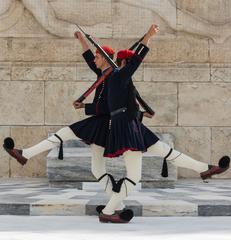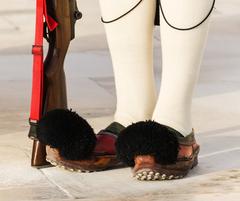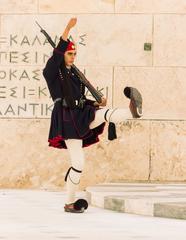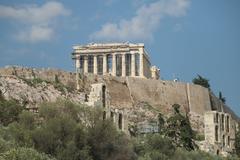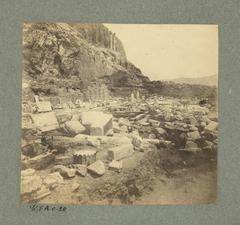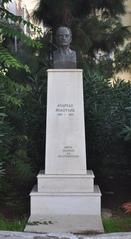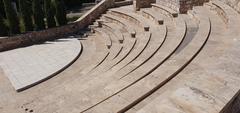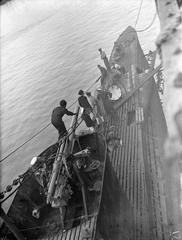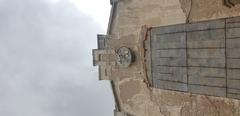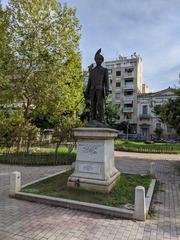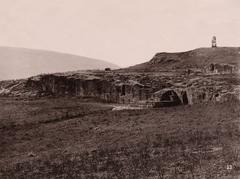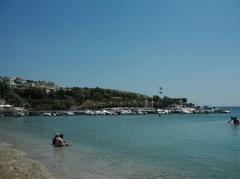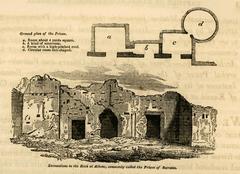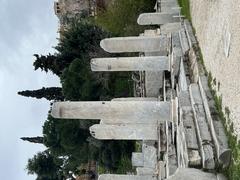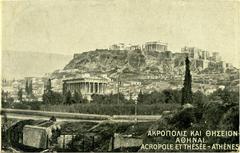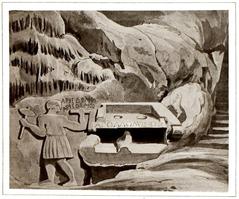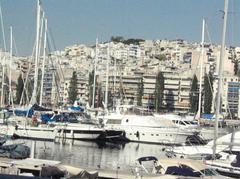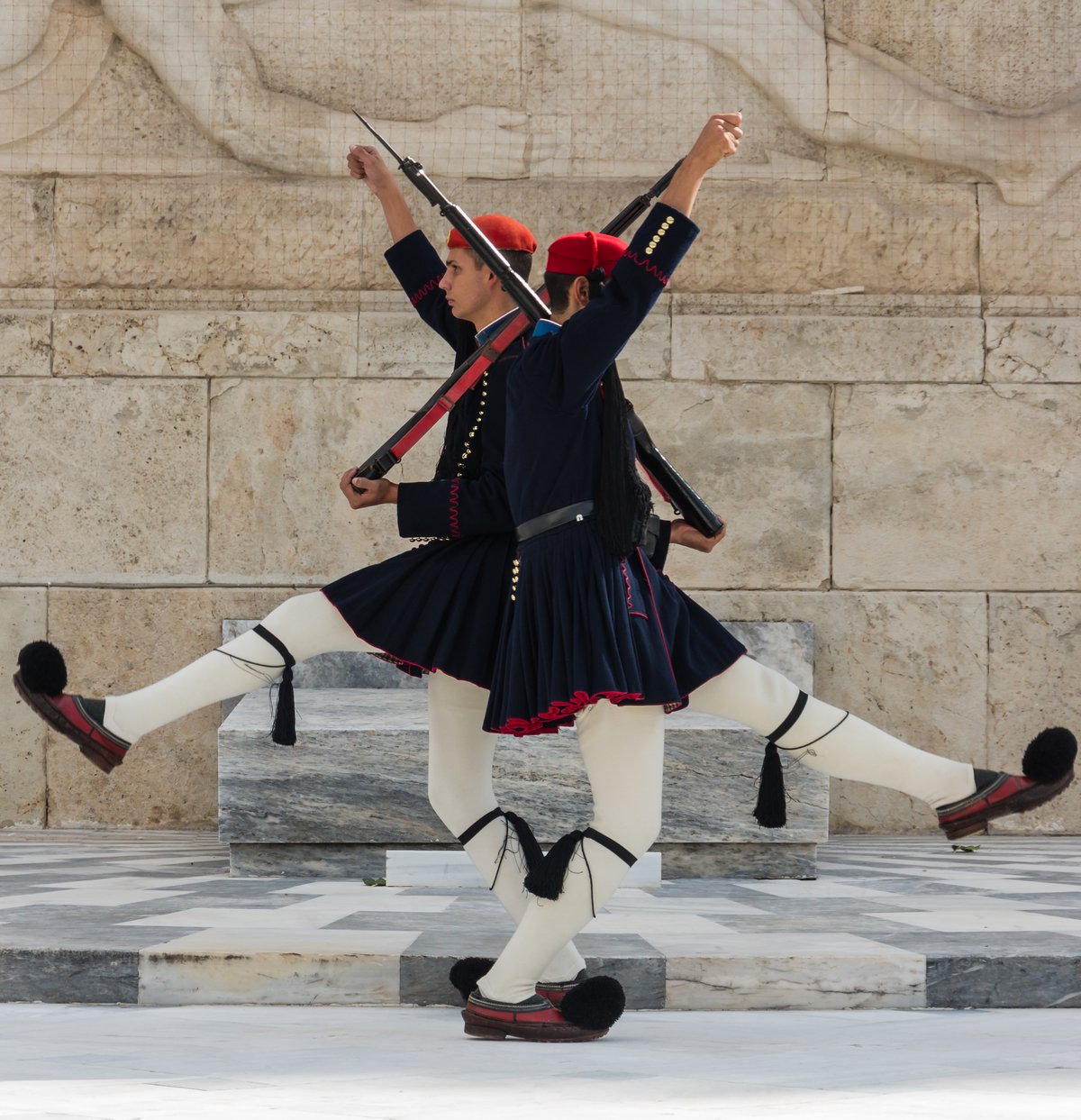
Comprehensive Guide to Visiting the Monument to the Unknown Soldier in Piraeus, Greece
Date: 18/07/2024
Introduction
The Monument to the Unknown Soldier in Piraeus, Greece, stands as a solemn tribute to the sacrifices made by Greek soldiers who lost their lives in service to their country. Located prominently at the heart of the city, in Alexandras Square, the monument serves as a constant reminder of the human cost of war and the unwavering spirit of those who defend their homeland. The idea for this monument emerged in the aftermath of World War I, a conflict marked by unprecedented destruction and loss of life, prompting many nations to commemorate their fallen soldiers, particularly those whose remains were unidentified. In Greece, the initiative for the monument was spearheaded by Theodoros Pangalos, the then-Minister of Military Affairs, who envisioned a tribute embodying the nation’s gratitude for the soldiers’ ultimate sacrifice (source).
Table of Contents
- [History and Significance](#history-and-significancehistory-and-significance)
- [Architectural and Symbolic Details](#architectural-and-symbolic-detailsarchitectural-and-symbolic-details)
- [Visitor Information](#visitor-informationvisitor-information)
- [Travel Tips and Nearby Attractions](#travel-tips-and-nearby-attractionstravel-tips-and-nearby-attractions)
- [Accessibility](#accessibilityaccessibility)
- [Special Events and Guided Tours](#special-events-and-guided-toursspecial-events-and-guided-tours)
- [Photographic Spots](#photographic-spotsphotographic-spots)
- [Frequently Asked Questions](#frequently-asked-questionsfrequently-asked-questions)
- [Conclusion](#conclusionconclusion)
History and Significance
The idea for a monument honoring the Unknown Soldier in Greece emerged in the aftermath of World War I. The war, with its unprecedented scale of destruction and loss of life, prompted many nations to commemorate their fallen soldiers, particularly those whose remains were unidentified.
In Greece, the initiative for the monument was spearheaded by the then-Minister of Military Affairs, Theodoros Pangalos. He envisioned a monument that would embody the nation’s gratitude and respect for the countless soldiers who made the ultimate sacrifice.
The monument’s design was entrusted to the renowned sculptor, Lazaros Sochos. Sochos, known for his powerful and evocative style, drew inspiration from classical Greek art, aiming to create a timeless tribute that would resonate with future generations.
The construction of the monument commenced in 1926 and was completed in 1930. The site chosen for the monument, Alexandras Square, held significant historical importance. It was a central point in ancient Piraeus and had witnessed numerous historical events over the centuries.
Architectural and Symbolic Details
The Monument to the Unknown Soldier in Piraeus is a striking example of modern Greek sculpture, seamlessly blending classical influences with a contemporary aesthetic. The monument’s focal point is a bronze statue of a dying hoplite, an ancient Greek citizen-soldier. The hoplite, depicted in full battle gear, lies mortally wounded, his shield fallen beside him. His posture, while conveying the tragedy of his sacrifice, also exudes an aura of courage and defiance.
The base of the monument is made of Pentelic marble, the same material used in the construction of the Acropolis. This choice of material further emphasizes the monument’s connection to Greece’s rich history and heritage. The base features intricate reliefs depicting scenes from Greek mythology and history, all related to themes of war, sacrifice, and heroism.
One relief portrays the Battle of Marathon, a pivotal moment in ancient Greek history where a vastly outnumbered Athenian army defeated the invading Persian forces. Another relief depicts the Nymphs offering water to a wounded soldier, symbolizing compassion and care for those who have suffered in war.
Visitor Information
For those planning to visit, the Monument to the Unknown Soldier is accessible throughout the year. There are no entrance fees or tickets required to view the monument. The best visiting hours are during daylight, from early morning until evening, allowing visitors to fully appreciate the intricate details and historical significance of the site.
Travel Tips and Nearby Attractions
Piraeus, being a historical city, offers many attractions near the monument. Visitors can explore the Archaeological Museum of Piraeus, which houses artifacts from the ancient port city. The Hellenic Maritime Museum is also nearby, providing insights into Greece’s naval history. For those interested in a more leisurely visit, the scenic Mikrolimano harbor offers dining and picturesque views.
Accessibility
The monument is accessible to all visitors, including those with disabilities. Alexandras Square is equipped with ramps and paved pathways, ensuring that everyone can visit without any hindrance.
Special Events and Guided Tours
Throughout the year, the monument hosts various ceremonies, especially on national holidays such as Independence Day (March 25th) and Oxi Day (October 28th). These events often feature wreath-laying ceremonies, military parades, and moments of silence. Guided tours are available through local tourism agencies, offering detailed insights into the monument’s history and significance.
Photographic Spots
For photography enthusiasts, the best spots to capture the monument include the front view of the bronze hoplite and the side reliefs depicting historical scenes. Early morning or late afternoon light provides the best conditions for photography.
Frequently Asked Questions
Q - What are the visiting hours for the Monument to the Unknown Soldier? A - The monument is accessible throughout the day, from early morning until evening.
Q - Is there an entrance fee to visit the monument? A - No, there are no entrance fees or tickets required.
Q - Are there guided tours available? A - Yes, guided tours can be arranged through local tourism agencies.
Q - What are some nearby attractions? A - Nearby attractions include the Archaeological Museum of Piraeus, the Hellenic Maritime Museum, and the Mikrolimano harbor.
Q - Is the monument accessible to disabled visitors? A - Yes, the monument and Alexandras Square are equipped with ramps and paved pathways for accessibility.
Conclusion
Today, the Monument to the Unknown Soldier in Piraeus remains a powerful symbol of sacrifice, patriotism, and national unity. It stands as a testament to the enduring legacy of those who fought and died for Greece, reminding us of the human cost of conflict and the importance of peace. The monument’s prominent location in the heart of Piraeus ensures that it remains a focal point of the city, a place where residents and visitors alike can pause, reflect, and pay their respects to the heroes who shaped Greece’s history. Whether you are a history enthusiast or a casual traveler, visiting this monument offers a unique opportunity to connect with Greece’s rich heritage and reflect on the sacrifices made for freedom (source).
References
- Exploring the Monument to the Unknown Soldier in Piraeus - History, Visiting Hours, and Tips, 2024, Audiala source
- Visiting the Monument of the Unknown Soldier in Piraeus - History, Design, and Visitor Information, 2024, Audiala source
- Monument of the Unknown Soldier in Piraeus - Visiting Hours, Tickets, History, and Tips, 2024, Audiala source
